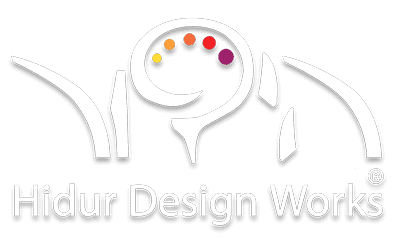metaphorize!
Ah, but a man’s speech should exceed his grammar, or what’s a metaphor?
endangered minds
It is imagination that first taught man the moral meaning of color, of contour, of sound, and of scent. In the beginning of the world it created analogy and metaphor.
—Charles Baudelaire (1821–1867)
a different perception of reality
For most artists, a metaphor is more than just a figure of speech. It is their primary tool for conveying meaning and a way of thinking about and experiencing the world. It allows for a different perception of reality and a deeper understanding of it. I have noticed that many people today struggle to truly see and listen. They often confuse the process of transcending reality with ignoring it. However, this is not to say that reality should be ignored. In fact, it cannot be ignored — and even if we tried, it’ll strike back, turning into a roaring lion.
Developing a different focus on our experience and perception of reality means going beyond what is obvious and visible. It involves seeking a deeper truth, meaning, and purpose. This process is shared by philosophy, religion, and art. Unfortunately, in today’s world, this ability is often lost due to constant exposure to images through photos, television, and the internet. This flood of images is often blank, brutally direct, and lacking in substance. Reality TV only adds to the problem by purposely producing lies about reality. It’s unclear if people have lost or never developed a metaphorical mindset, or if there’s a lack of education in the fine arts and humanities. Regardless, something important is missing. This message is a plea for the use of metaphor in life, as it makes life richer, more fun, and deeper. So, let’s all try to metaphorize!
The earth has music for those who listen.
—George Santayana (1863–1952)
providing a name for everything
All art, music, and poetry are constantly pregnant with metaphor.
The metaphor of shape.
The metaphor of color.
The metaphor of words.
The metaphor of melody and sound.
The metaphor of tastes and scents.
In his “Institutio Oratoria”, Quintilian writes about the metaphor that it “finally succeeds in the supremely difficult task of providing a name for everything.”
I love this quote! As an artist, I believe that one of the most important functions of art is to act as a translator and agent for what John Keats referred to as “The Poetry of Earth.” This encompasses all aspects of creation and everything that is connected to it. Artists, regardless of their chosen medium, have the responsibility of showing what cannot be seen, naming what cannot be told, and recording what is both invisible and silent. This helps to bridge the gap between heaven and earth, making us aware of how we carry both within ourselves. Art has the power to illuminate what might otherwise remain hidden in darkness, while metaphors give us wings, build our foundation, and enlighten us. It is important to acknowledge, though, that no words or metaphors can fully capture the essence of the matter itself.
The eye should learn to listen before it looks.
—Robert Frank (1924–2019)
the moral value of a metaphor
“… If it (metaphor) be but rightly managed, it can never be either vulgar, mean, or disagreeable. It increases the copiousness of a language by allowing it to borrow what it does not naturally possess; and, what is its greatest achievement, it prevents an appellation from being wanting for anything whatever. A noun or a verb is accordingly transferred, as it were, from that place in the language to which it properly belongs to one in which there is either no proper word or in which the metaphorical word is preferable to the proper. This change we make, either because it is necessary; because it adds to significance, or, as I said because it is more ornamental. Where the transference produces no one of these effects, it will be vicious.”
What a remarkable thought!
The ethical, moral, and aesthetic value of metaphor!
I once heard a fascinating lecture by Dr. Rabbi Akiva Tatz, a prominent physician and rabbi, on the significance and potency of speech in Judaism. During the lecture, he posed a question about the definition of “good.” While religious beliefs shape our understanding of good, if we approached it from a natural science perspective, what would define “good” in those terms?
According to a natural definition, good would involve using a tool for its intended purpose, while using it for something other than its intended purpose would be considered evil. When a tool is used for its intended purpose, it performs optimally and remains in perfect condition.
This concept leads me to think about Quintilian and Baudelaire’s ideas. When art is used metaphorically to shed light on our existence through its intended artistic means, it becomes a moral, ethical, or political vehicle that has the power to make us and the world better and more humane. When art fails to fulfill these roles, it becomes nothing but a vicious entity with no purpose.
I will never stop striving for the first.
As an artist.
As a Jew.
As a human being.
Ah, but a man’s reach should exceed his grasp, or what’s a heaven for?
—Robert Browning (1821–1889)
